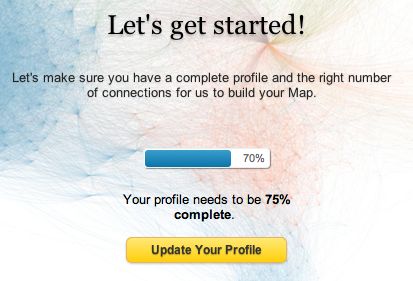
Suggestions for LinkedIn
I know lots of people use LinkedIn and like it. It seems more like a sort of obligation for me, but I know lots of nice people who work there, so I thought I’d collect some of my frustrations with the service and turn them intro constructive suggestions. You folks can work on these features while you’re enduring the quiet period before your IPO!
- Amnesty Day: Lots of people don’t want to update their profiles because they are worried their employers will think (perhaps correctly!) that they’re on the hunt for a job. Every two or three months, offer up a Profile Amnesty Day where people can make changes without it indicating anything untoward.
- Minor Edits: In many wiki software tools, you can mark certain changes as “minor edits”, so they don’t trigger update notifications akin to major content changes. Making small tweaks to one’s LinkedIn profile should offer the same option.
- Revised Credential Assumptions: LinkedIn has a fun little tool called LinkedIn Maps that offers a pretty visualization of your social network on the service. I like the results — I’ve been at a few conferences where they gave printed-out versions of the map as a souvenir, and that was very nice. But if I try to generate my own dynamic map at the link shown above, LinkedIn tells me that my profile needs to be 75% complete in order to participate.
Now, here’s the thing: My profile is 75% complete. So maybe there’s just a bug in detecting how far along my profile’s progressed. But even before I had reached that milestone, LinkedIn admonished me to get to 75% complete on my profile by adding my education to my profile.
Here’s the thing, though: My education’s all already in there. I didn’t go to college. It’s another facet of the flaw in drop-down identities that LinkedIn assumes someone in my social context had to have learned in a traditional way in order to participate in the career that I have.

More broadly, the annoyances with publishing my profile updates reflect this social tension as well: Not everyone can afford to publicize the changes they’re making to their job information. Now, I know that you can turn that setting off. It’s possible, if you dig deeply enough into LinkedIn’s settings, that you can keep people from seeing your every tweak.
But right now, the default settings encourage the sort of social friction that benefits those who preen and promote themselves, while disadvantaging those who are more circumspect about broadcasting their career moves. It’d be a nice innovation if LinkedIn flipped those assumptions.